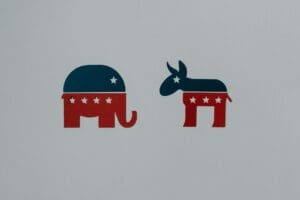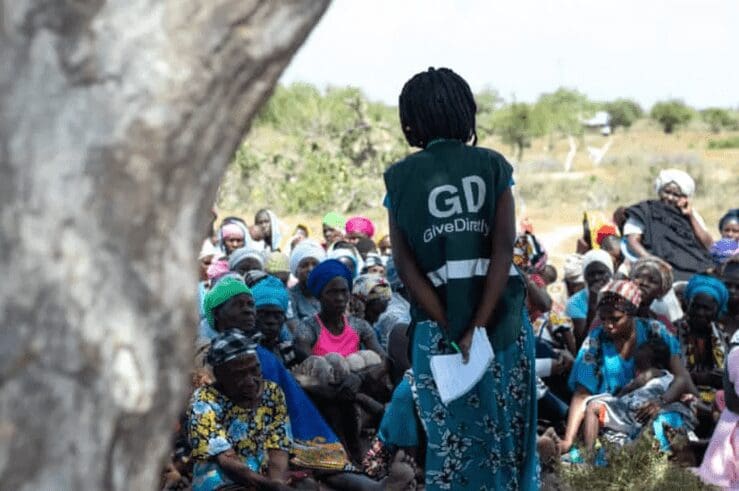For about a decade now, the charity GiveDirectly has been distributing cash straight to poor residents in sub-Saharan Africa, starting in Kenya and expanding later to Uganda, Malawi, Rwanda, Liberia, the Democratic Republic of the Congo, and Morocco.
The organization was founded by economists, and has been studying the impact of its programs from the get-go. But the research has focused narrowly on recipients: Were they better off, the same, or worse off than people not getting cash?
Now, a research team has released a study of a large-scale GiveDirectly program that distributed over $10 million in cash to rural residents of Siaya County, Kenya, near Lake Victoria. But this time, the focus was not on the individuals who received aid. Instead, the researchers wanted to find out what effect the cash had on the region of Kenya where the aid was being distributed — the first major study to test “general equilibrium” effects of the policy.
GiveDirectly gave about $1,000 (or $1,871 in purchasing power terms) each to more than 10,500 households, through three transfers over the course of about eight months. The program amounted to about 15 percent of the GDP of the local area. For comparison, that’s about three times as much economic stimulus, relative to the size of the economy, as the 2008-09 stimulus packages in the US.
“In this case what the cash seems to do is to encourage people to spend some money and this causes an increase in the number of productive labor hours in the economy.”
So the researchers conducted extensive, repeated surveys not just of recipients but of local businesses and employers too, to see how wages and prices change. Given how many people were collecting data, the study as a whole cost upward of $1 million to pull together, according to Ted Miguel, a coauthor on the paper and economist at UC Berkeley. (Miguel wrote the paper with Dennis Egger, Johannes Haushofer, Paul Niehaus, and Michael Walker.)
They found that the cash transfers not only benefited recipients; they benefited people in nearby villages too because recipients spent more money, some of which went to their neighbors’ businesses. Contrary to some fears, there were no meaningful inflation effects, and there were no envy or jealousy effects where people close by who didn’t receive cash felt worse off after the intervention.
Most striking of all, the study estimates a “fiscal multiplier” of 2.6 for this area of Kenya, implying that every $1 invested in fiscal stimulus will grow the local economy by $2.60. That’s somewhat larger than the multiplier estimated in places like the US when in recession. But “there’s probably many low- and middle-income countries that look more like Kenya than the US,” Miguel says. “These numbers could be very useful in understanding fiscal multipliers in many places across the world.”
That’s the big, striking thing about this study. It doesn’t just evaluate a specific charity. It lays out a strategy that might be more generally useful for poor countries in escaping dire poverty. That strategy is surprisingly simple and well known to people in rich countries: Keynesian stimulus.
It’s a strategy that foreign aid sent from rich countries to poor countries could use more in the future — if this study is any indication, to good effect. In particular, the study suggests that basic income programs in poor countries, as considered by the current Indian government, could be more than useful poverty alleviation tools — they could also have real economic benefits. And in countries like Nigeria or Angola with lots of natural resources wealth that can be used to fund a basic income without distorting the economy, the promise is especially great.
Previous studies raised downsides to GiveDirectly’s approach
This is not the first major evaluation of a GiveDirectly program. Haushofer and fellow economist Jeremy Shapiro conducted a short-term randomized trial of GiveDirectly’s programs in rural Kenya from 2011 and 2013, focusing on effects nine months after villagers were given either $404 or $1,525 in cash.
The short-term evaluation found that the lives of recipients improved immensely: Hunger plummeted, investment in and income from farming and small business increased (suggesting the transfer was fueling economic growth), ownership of valuable assets like iron roofs and livestock spiked, and recipients were happier on a number of metrics.
But subsequent research looked at the cash transfer’s spillover effects — and it complicated the picture.
First, Haushofer, Shapiro, and James Reisinger released another paper finding that even in the short-term, life satisfaction — measured by asking “All things considered, how satisfied are you with your life as a whole these days?” on a scale of 1 to 10 — fell among villagers who didn’t get cash but whose neighbors did. That suggested that the benefits to recipients might have come with real costs to non-recipients, who had to watch their neighbors flourish as they stayed put.
Then in 2018 Haushofer and Shapiro released a follow-up paper measuring effects after three years, which prompted a major debate between GiveDirectly and other economists like the World Bank’s Berk Özler.
The debate concerned the different results Haushofer and Shapiro found when comparing within a village, as opposed to between villages. Within a given village, people getting cash seemed significantly better off three years later; they had $400 more in assets on average and spent $47 more every month, meaning they had a significantly better qualify of life years after getting the money.
But if you compared villages where some people got cash to villages where no one did, the former weren’t much better off. That led some, like Özler, to worry that the program hadn’t helped recipients that much, but had hurt their neighbors substantially, making the program not much of a success. This isn’t an unheard-of result, either; Özler and coauthors found negative spillovers in terms of life satisfaction from a cash program in Malawi, and a recent World Bank study found that a cash program increased stunting of children’s growth for households not getting the cash, a really serious negative spillover.
Others disputed Özler’s interpretation, suggesting that the odd results stemmed from bad data; Sandefur notes that data collection was done differently in control villages.
GiveWell, the charity evaluator that has recommended GiveDirectly as a cause for many years, opted to wait until another, bigger-sample-size paper came out testing spillovers from GiveDirectly instead of taking a side in that specific dispute, noting that new evidence could help resolve the disagreement. That more comprehensive study, the “general equilibrium” evaluation, is the new paper that this very article is about.
The new study is a response to those earlier critiques
So, what does the new evidence say? The new paper did not do any internal randomization in villages — everyone eligible for a transfer for each village got a transfer. That itself reduced the odds of negative spillovers by creating fewer relative “losers” within the same village. But eligible households were only one-third of their villages, typically; to be eligible, recipients had to live in thatched roofs, a simple test of poverty (richer households in rural Kenya typically have metal roofs).
It was still possible their wealthier neighbors could have been left worse off psychologically or economically by the transfer in the ways the prior studies suggested. The design also left open the possibility that people in control villages could be worse off. Perhaps the cash would spark inflation that made them worse off, or they’d hear about it and have worse psychological health as a result.
Neither of those happened. Households that didn’t get transfers were substantially better off — they spent $334 more on average in the following year and a half, similar to the increase in spending for households getting the cash. This wasn’t a “keeping up with the Joneses” effect where they sped up spending and reduced saving to keep up with their peers: their savings, if anything, increased. Instead, the spending seemed to be financed in large part by a substantial increase in annual income, largely from wages.
Basically, the overall regional economy expanded, and both recipients and non-recipients were better off because the transfers enabled spending that helped their employers and their own businesses.
There were no significant effects on psychological well-being for non-recipients; the estimated effect was actually positive, but not significant.
Basically, the negative spillovers the previous studies suggested were possible didn’t show up.
That, again, is partly by design. Jealousy among equivalently poor households in the same village was less likely this time around, because all eligible households got paid. But there were still thousands of slightly richer neighbors who could’ve, in theory, been hurt — and weren’t.
“It has altered my priors a lot,” Haushofer says. “This new study … we not only see no evidence of negative spillovers, we see lots of evidence of positive spillovers, even on psychological outcomes. It’s not entirely clear why that happened. For whatever reason, we managed to boost the local economy and generate large economic spillover and the psychological spillovers seemed to track those.”
The study provides evidence for a specific model of what’s lacking in developing countries’ economies
The story presented by the study is a little puzzling from the perspective of traditional development economics. If a rural village in Kenya is a closed market — that is, it doesn’t trade with other villages or cities at all — then throwing in more money should just lead to inflation. The money itself doesn’t increase the village’s ability to produce useful goods and services — it doesn’t create new haircuts or dress tailorings or metal roofs out of thin air. So you have more money chasing the same number of goods, meaning the price of the goods has to go up.
If the village is an open market, by contrast, then you might not see price effects — the price of the goods is set at the regional or national level, and so pouring money into a particular village could make it better off without sparking inflation. Most villages in the study were a mix of both, with many goods being brought in from the rest of Kenya, but other goods and services — like carpentry or tailoring or perishable food — provided locally.
The puzzling thing about this new paper is that it finds minimal inflation effects — about a 0.1 percent increase in prices, on average — even on “non-tradeable” goods and services produced locally. Seema Jayachandran, an economist at Northwestern who has found small inflation effects from a cash program in Mexico in her own work, says the minimal inflation is understandable for traded goods, but not for local services. “People maybe hired a carpenter to build some furniture. The carpenter had more money so ate at a local restaurant, and so forth,” she says. “Those services use various inputs, and we expect some of those inputs to be scarce. And when there’s more demand for a scarce resource, we expect the price of those inputs, and then the final good or service, to go up.”
That the prices didn’t go up is especially confusing considering the income benefits for people not getting the transfer. That implies that a lot of the increased spending went to goods and services made locally, goods and services whose prices should have gone up as a result because the labor and other inputs required to make them are scarce. “How do we reconcile the big multiplier on local income, on the one hand, and the negligible effect on prices of non-tradeables, on the other hand?” Jayachandran asks. “I don’t mean that something is wrong with the paper, but there’s a tension in the results that the paper doesn’t full explain.”
The tension might be explained, in part, by data problems: The price survey conducted by the researchers, while rigorous, focused more on goods than services, and so might have missed if the cost of, say, carpentry or tailoring services went up.
But Gharad Bryan, an economics professor at the London School of Economics who studies cash transfer programs, raises another intriguing possibility. It could be that a key input for those services — people, labor — was not actually scarce.
“Anyone who has spent time in similar villages will have seen the large amounts of ‘surplus labor.’ It is a hallmark of many developing countries that there just is not a lot to do,” Bryan notes. “In this case what the cash seems to do is to encourage people to spend some money and this causes an increase in the number of productive labor hours in the economy.” Apart from reducing leisure time, that’s just a win — and could explain why there were no inflation effects.
If that story is true — and I should be clear that this is just one study and we don’t know that this story holds for most rural villages in sub-Saharan Africa or even most in Kenya — it implies there’s a lot of “slack” in the economy as a matter of course, and a bit of Keynesian stimulus that rouses underutilized resources in the economy, like surplus labor, could do a considerable amount of good.
“Despite the ease of explaining the result, it surprised me,” Bryan adds. “And if it is true outside of these villages in Kenya it gives something for all the people interested in development to think about: If developing countries are more broadly characterized by surplus labor (and I suspect that they are), then does this new evidence suggest that large aggregate gains can be had just by pushing money in to the economies?”
Jayachandran cautions that poor countries are still subject to a budget constraint, and can’t just borrow to do stimulus indefinitely. “A developing country could tax richer people to give cash to poorer people, but then the aggregate effect on the economy depends on both the negative stimulus from less spending by richer citizens and the positive stimulus from more spending by poorer citizens,” she explains. “The net stimulus effect could be positive or negative.”
But in countries that do have the capacity for deficit-finance stimulus, this research is incredibly useful.
“One of the comments that I hear the most from policy-makers is that is developing an established social protection infrastructure (i.e. the targeted list of beneficiaries, electronic payments systems, etc) is not just about policy alleviation,” says Rema Hanna, an economist and professor at the Harvard Kennedy School who advises developing country governments on cash and other safety net programs. “Having systems in place can allow the government to more quickly respond to economic downturns by increasing cash transfers to spur demand.”
“To me, this study is, therefore, very important in that it credibly aims to measure this effect, and gives us a sense of the magnitude of how transfers could be used for stimulus.”
Moreover, the Keynesian story offers a path forward for foreign aid, which does not impose taxes on the local population and so is not subject to budget constraints for the low-income country in question. It suggests that direct transfers from rich country governments and NGOs to poor countries to be used as cash transfers, or even subsidized loans to be used to expand cash transfer programs, could do more than just help their recipients for a short while. They could help speed up the development process more generally.
That’s a speculative idea. We need more research. But if it’s right, it’s incredibly exciting.

















